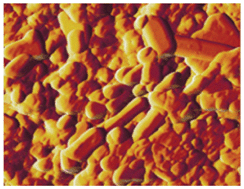 It wasn’t so long ago when Plaster of Paris was used for plaster bandages when a patient broke their arm or leg. Nowadays, synthetic polymer materials tend to be used for such purposes but Plaster of Paris still finds wide use for building materials.
It wasn’t so long ago when Plaster of Paris was used for plaster bandages when a patient broke their arm or leg. Nowadays, synthetic polymer materials tend to be used for such purposes but Plaster of Paris still finds wide use for building materials.
When Plaster of Paris (also known as bassanite or for those of us chemists not so familiar with this material, CaSO4.1/2H2O) is mixed with water, the less soluble compound, gypsum is formed (CaSO4.2H2O). This precipitates out of solution to produce interlocking, needle-like crystals. There have been many studies looking into this crystallisation reaction, however most real-life applications rely on crystallisation onto a solid support and as such, the studies to date are arguably not so industrially-relevant.
Now, in their latest CrystEngComm article, Stephen Mann and colleagues from the University of Bristol report on Plaster of Paris crystallisation onto inert films of cellulose. They found that the films can be made active by pre-treating them with a solution of Ca2+. Mann et al. say that such pre-treatment may have important implications for using Plaster of Paris materials in a wide range of industrial applications.
To read more about this work, download the article:
Calcium sulfate hemihydrate-mediated crystallization of gypsum on Ca2+-activated cellulose thin films
Stephen Mann, Mei Li, Tomi Nissinen and Nelly Brielles
CrystEngComm, 2013










